
Gallery: Oldest Living Things in the World
A new field of study
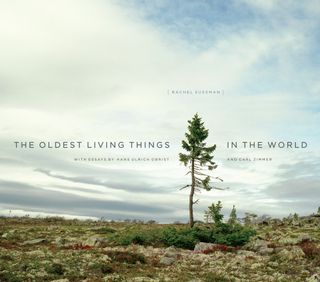
Paulette Beete, NEA senior writer-editor, contributed this article as part of partnership between NEA and Live Science’s Expert Voices: Op-Ed & Insights.
Rachel Sussman's work is equal parts art, science and philosophy, and with her images of 3,000-year-old lichen and 7,000-year-old trees, she draws poignant perspectives on the nature of time, life and humanity's place in it.
Sussman's work provides audiences with a way to understand ideas around deep time, and has served as a portal for connecting scientists from disparate disciplines, providing them with a platform to consider the intersections between their various specialties.
The artist has exhibited widely in solo and group shows at venues including the Berlin Botanical Museum, the Montalvo Arts Center, the Museum of Contemporary Photography, and the American Museum of Natural History. And this past April, University of Chicago Press published the monograph “The Oldest Living Things in the World“ You can read more about Sussman's work in her interview, view her work live at Pioneer Works Center for Art and Innovation in Brooklyn on September 13th, 2014, and see several of her images from her Oldest Living Things project in this gallery.
Not really moss

La Llareta #0308-2B31 (2,000+ years old; Atacama Desert, Chile)
What looks like moss covering rocks is actually a very dense, flowering shrub that happens to be a relative of parsley, living in the extremely high elevations of the Atacama Desert.
Effects of climate change
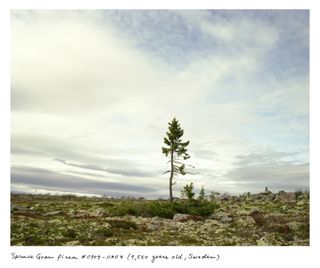
Spruce Gran Picea #0909 – 11A07 (9,550 years old; Fulufjället, Sweden)
This 9,950-year-old tree is like a portrait of climate change. The mass of branches near the ground grew the same way for roughly 9,500 years, but the new, spindly trunk in the center is only 50 or so years old, caused by warming at the top of this mountain plateau in Western Sweden.
Here from the start

Stromatolites #1211-0512 (2,000 - 3,000 years old; Carbla Station, Western Australia)
Straddling the biologic and the geologic, stromatolites are organisms that are tied to the oxygenation of the planet 3.5 billion years ago, and the beginnings of all life on Earth.
Really old moss
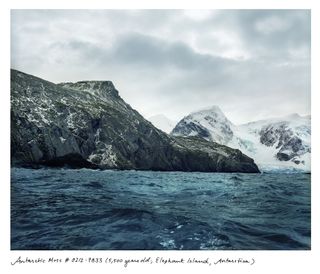
Antarctic Moss #0212-7B33 (5,500 years old; Elephant Island, Antarctica)
This 5,500-year-old moss bank lives right around the corner from where the Shackleton Expedition was marooned 100 years ago on Elephant Island, Antarctica. It was a victory simply being able to locate it. These days it's easier to get to Antarctica from space.
A tale of trees
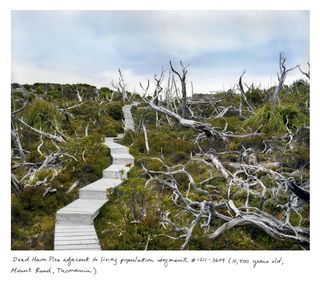
Dead Huon Pine adjacent to living population segment #1211-3609 (10,500 years old, Mount Read, Tasmania
Fire destroyed much of this clonal colony of Huon Pines (as seen in this photograph) on Mount Read, Tasmania, but a substantial portion of it survived. The age of the colony was discovered by carbon-dating ancient pollen found at the bottom of a nearby lake bed — the pollen was genetically matched to the living colony.
Simpler than it looks
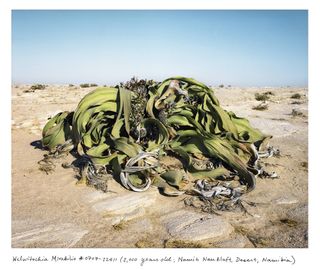
Welwitschia Mirabilis #0707-22411 (2,000 years old; Namib-Naukluft Desert, Namibia)
The Welwistchia is primitive conifer living only in parts of coastal Namibia and Angola where moisture from the sea meets the desert. Despite appearances, it only has two single leaves, which it never sheds. National plant of Namibia.
Sign up for the Live Science daily newsletter now
Get the world’s most fascinating discoveries delivered straight to your inbox.
Interesting uses

Pafuri Baobab #0707-1335 (Up to 2,000 years old; Kruger National Park, South Africa)
This baobab lives in the Kruger Game Preserve in South Africa and requires an armed escort to visit. Baobabs get pulpy at their centers and tend to hollow out as they grow older. These hollows can serve as natural shelters for animals, but have also been appropriated for some less scrupulous human uses: for instance, as a toilet, a prison, and a bar.
Under the sea

Posidonia Oceania Sea Grass #0910-0753 (100,000 years old, Balearic Islands, Spain)
At 100,000 years old, the Posidonia sea grass meadow was first taking root at the same time some of our earliest ancestors were creating the first known "art studio" in South Africa. It lives in the UNESCO-protected waterway between the islands of Ibiza and Formentera.
The oldest organisms
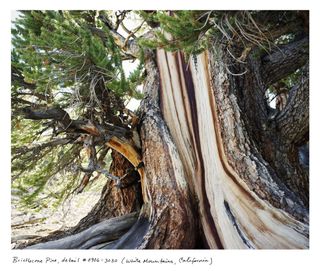
Bristlecone Pine #0906-3030 (White Mountains, California)
Bristlecone pines are the oldest unitary organisms in the world, known to surpass 5,000 years in age. In the 1960s a then-grad student cut down what would have been the oldest known tree in the world while retrieving a lost coring bit. A cross section of that tree was placed in a Nevada casino.
An endangered plant

Rare Eucalyptus (species redacted for protection) #1211-2233 (13,000 years old; New South Wales, Australia)
This critically endangered eucalyptus is around 13,000 years old, and one of fewer than five individuals of its kind left on the planet. The species name might hint heavily at its location, so it has been redacted.
